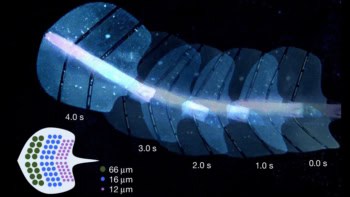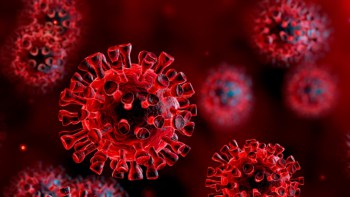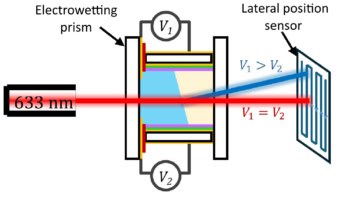
Managing one’s mental workload is a tricky balancing act that can affect cognitive performance and decision making abilities. Too little engagement with an ongoing task can lead to boredom and mistakes; too high could cause a person to become overwhelmed.
For those performing safety-critical tasks, such as air traffic controllers or truck drivers for example, monitoring how hard their brain is working is even more important – lapses in focus could have serious consequences. But how can a person’s mental workload be assessed? A team at the University of Texas at Austin proposes the use of temporary face tattoos that can track when a person’s brain is working too hard.
“Technology is developing faster than human evolution. Our brain capacity cannot keep up and can easily get overloaded,” says lead author Nanshu Lu in a press statement. “There is an optimal mental workload for optimal performance, which differs from person to person.”
The traditional approach for monitoring mental workload is electroencephalography (EEG), which analyses the brain’s electrical activity. But EEG devices are wired, bulky and uncomfortable, making them impractical for real-world situations. Measurements of eye movements using electrooculography (EOG) are another option for assessing mental workload.
Lu and colleagues have developed an ultrathin wireless e-tattoo that records high-fidelity EEG and EOG signals from the forehead. The e-tattoo combines a disposable sticker-like electrode layer and a reusable battery-powered flexible printed circuit (FPC) for data acquisition and wireless transmission.
The serpentine-shaped electrodes and interconnects are made from low-cost, conductive graphite-deposited polyurethane, coated with an adhesive polymer composite to reduce contact impedance and improve skin attachment. The e-tattoo stretches and conforms to the skin, providing reliable signal acquisition, even during dynamic activities such as walking and running.
To assess the e-tattoo’s ability to record basic neural activities, the team used it to measure alpha brainwaves as a volunteer opened and closed their eyes. The e-tattoo captured equivalent neural spectra to that recorded by a commercial gel electrode-based EEG system with comparable signal fidelity.
The researchers next tested the e-tattoo on six participants while they performed a visuospatial memory task that gradually increased in difficulty. They analysed the signals collected by the e-tattoo during the tasks, extracting EEG band powers for delta, theta, alpha, beta and gamma brainwaves, plus various EOG features.
As the task got more difficult, the participants showed higher activity in the theta and delta bands, a feature associated with increased cognitive demand. Meanwhile, activity in the alpha and beta bands decreased, indicating mental fatigue.
The researchers built a machine learning model to predict the level of mental workload experienced during the tasks, training it on forehead EEG and EOG features recorded by the e-tattoo. The model could reliably estimate mental workload in each of the six subjects, demonstrating the feasibility of real-time cognitive state decoding.

Ultrathin e-tattoo provides continuous heart monitoring
“Our key innovation lies in the successful decoding of mental workload using a wireless, low-power, low-noise and ultrathin EEG/EOG e-tattoo device,” the researchers write. “It addresses the unique challenges of monitoring forehead EEG and EOG, where wearability, non-obstructiveness and signal stability are critical to assessing mental workload in the real world.”
They suggest that future applications could include real-time cognitive load monitoring in pilots, operators and healthcare professionals. “We’ve long monitored workers’ physical health, tracking injuries and muscle strain,” says co-author Luis Sentis. “Now we have the ability to monitor mental strain, which hasn’t been tracked. This could fundamentally change how organizations ensure the overall well-being of their workforce.”
The e-tattoo is described in Device.



